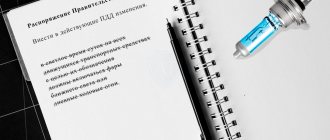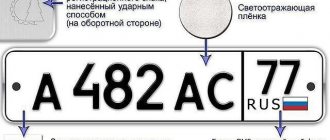In most cases, the debtor's property is seized only if he is insolvent. What to do if bailiffs seize a car. There can be several reasons for the debt, for example, the car is pledged to the bank, and the client stops making payments, or due to civil claims from other persons.
A similar measure can also be used to avoid paying taxes. As a general rule, the arrest remains until the debt is paid in full with all accrued interest and penalties.
Seizure can be carried out both extrajudicially and in court, but the former requires compelling reasons, which will be discussed below. An out-of-court procedure is allowed if the amount of debt is large and there is a risk of the debtor evading payment. In this case, joint activities of the Federal Bailiff Service and traffic police inspectors may be organized aimed at detecting and seizing the debtors’ vehicles.
If the above grounds are not present, a court decision that has entered into legal force will be required. The debtor must receive a notice and a decision to seize his property.
We were unable to carry out any transactions with the car: what does this mean and what to do? Most likely, the car is under arrest and you will have to deal with it.
It is important to remember that if the following circumstances exist, the car cannot be seized:
- a car is the only means of transportation for a person who has a certificate of disability;
- The debtor's only professional activity depends entirely on the car.
When can an arrest be made?
The main purpose of the arrest is to force the debtor to pay, and in case of refusal, to sell his property in favor of the person to whom the debt is owed.
Specific cases:
- debt obligations to credit institutions, for example, to a bank. It is important to note that first he will ask the debtor when to expect the money and only when a significant amount has accumulated will he file a claim in court;
- significant debts to public utilities;
- avoidance of paying alimony;
- unpaid taxes;
- debt under the contract (to an individual or legal entity);
- civil claims against the person.
There are other grounds for arrest: division of joint property. During the trial, the arrest will ensure its safety.
Seizure at customs is possible if the owner:
- makes attempts to illegally cross the border;
- carries out transportation of items withdrawn from free civil circulation;
- avoids paying statutory fees and charges.
But still, the most common reason for arrest is debt, and this will be discussed in more detail later.
Purchasing a vehicle with a registration ban: features
If the FSSP vehicle purchased is subject to registration restrictions, it can be used legally for no longer than 10 days after signing the purchase and sale agreement.
The specified period is considered necessary for registering the car to the new owner and insuring it. But in this situation, it is impossible to re-register the vehicle in your name, all because of the same prohibition of registration actions.
10 days after signing the contract, you can no longer drive the purchased car. In case of ignoring this norm, the following sanctions will be imposed against the violator:
- for a primary violation - a fine of 800 rubles, which is regulated by Part 1 of Article 12.1 of the Code of Administrative Offenses of the Russian Federation;
- in case of repeated violation and this fact is revealed on the road by a traffic police inspector - a fine of 5,000 rubles or confiscation of the driver’s license for a period of 1 to 3 months, in accordance with Part 1 of Article 12.1 of the Code;
- when contacting the State Inspectorate office for the purpose of registering a vehicle - a fine in the amount of 1.5 to 2 thousand rubles.
Car seizure due to debt obligations
The only option for lifting the lien is to repay the debt in full, but the following steps should be taken first:
- establish the reason for the seizure. It must be contained in the resolution and notice of the commencement of proceedings;
- if there is little information, you should submit a written application to the Federal Bailiff Service;
- an illegal decision can be appealed: first administratively with a senior bailiff, and then in court;
- upon receipt of a refusal or recognition of one’s debts, ten days are given for payment, the period begins to run from the moment the resolution enters into legal force.
After the trial of first instance, you can file an appeal and subsequent cassation. This makes sense in two cases: when the actions of officials are clearly illegal or in order to stall for time to collect a sum of money. If the debtor continues to fail to act and wait for money, the bailiffs will sell the car at the minimum price in favor of another person.
ATTENTION !!! An important addition: the amount of debt should be approximately equal to the value of the seized car. If the difference is significant, the decision can be challenged in court.
Next, we will consider the parties that are potentially capable of seizing.
Seizure of a car by bailiffs - is it possible to drive?
MIP online legal encyclopedia - » Bailiffs » Seizure of a car by bailiffs - is it possible to drive? As judicial practice shows, the main question that arises when a car is seized by bailiffs, whether it is possible to drive, is faced by almost every car owner. On the one hand, the property no longer belongs to him by full right, but, on the other hand, it is still at the disposal of its owner.
If a car is seized by bailiffs, is it possible to drive - here every car owner can decide for himself. When such an arrest is made, information about it is sent to the local traffic police department so that its employees can register the vehicle. However, practice shows that this fact does not stop many car owners and they continue to use their vehicle. But this is possible only until the funds are transferred to the sale of debt repayment, that is, admitted for sale by the judicial authorities.
In this case, deregistration of the vehicle and all subsequent actions necessary to pay off the debt by selling the vehicle fall on its owner, including payment of all duties and cash costs.
To avoid misunderstandings and additional troubles, it is better to stop using the seized vehicle.
If you have any difficulties in seizing your property, or you do not agree with the actions of the bailiffs and want to challenge them, contact our lawyers for qualified assistance. Professionals in their field who have extensive practical experience in handling such cases will tell you the correct procedure for further actions, draw up and correctly execute any necessary documents, conduct detailed consultations with answers to questions, and also provide reliable protection and legal support at any stage of the trial.
If you want to learn more about the activities of bailiffs, if you are interested in the working hours of bailiffs in Vidnoye (or another city in the Moscow region), please contact our portal. Experienced and competent specialists will advise you on these and many other issues.
Author of the article
Kuznetsov Fedor Nikolaevich
More than 15 years of experience in the legal field; Specialization - resolution of family disputes, inheritance, property transactions, disputes over consumer rights, criminal cases, arbitration processes.
Arrest by court
A resolution that has entered into legal force is subject to mandatory execution by bailiffs. When making an arrest, the bailiffs must have a resolution, without which the procedure will be illegal. If a controversial situation arises, it should be appealed administratively or judicially. If all actions are legal, you can either pay or say goodbye to the car.
Thus, the law provides for several situations for seizing a car. The basis of any of them will be a debt obligation. Decisions of officials can be appealed in court, but for this it is better to seek help from a qualified specialist. It is also important to remember that seizure does not in any way prohibit the use of a car; the prohibition is imposed only on the powers of the owner.
Ban process
The bailiff service can prohibit registration actions in relation to a car as part of initiating enforcement proceedings. How it works? If a car owner has outstanding debts, the court has the right to decide to collect this debt from him. The case of the debtor driver is transferred to the correctional service. In case of further refusal to fulfill monetary obligations, a restriction of registration actions is imposed on the violator’s car.
Then, when contacting the State Inspectorate, the driver will not be able to:
- register the car after purchase;
- deregister the vehicle upon sale, loss, disposal, or export abroad;
- change the registration number of the car;
- restore a lost vehicle registration certificate.
Until the driver pays the debt, all these actions with his car will be unavailable.
What services do
First of all, order on the roads and adjacent territories is, of course, monitored by traffic police from the MREO department, the traffic police or the State Traffic Inspectorate.
The procedure may also include the services of expert emergency commissioners or damage assessors if the case is being considered after an accident.
Almost always, traffic police officers cooperate with car evacuation services, which have specialized equipment for this purpose that can remove any vehicle from the roadway (or other areas of automobile infrastructure) and deliver it to a impound lot located on the territory owned by the MREO or the traffic police.
They do not have the right to take your car to the impound lot if a protocol has not been drawn up before calling the tow truck.
This document must reflect not only the violation itself or other related facts, but also a list of all things located in the trunk and interior of the car, minibus or truck.
An inventory of the property must be compiled without fail, and all doors and other opening mechanisms must be carefully sealed and secured so that they do not accidentally open during transportation on a tow truck.
Until the owner of the car has received such a protocol, read its contents and signed for it, according to the law, the road patrol cannot evacuate the car to an impound lot.
Without your presence, the car can be towed to a specialized site only when you do not appear at your car for a long time as its owner or authorized representative.
Also in cases where a car is abandoned near the roadway or right in the middle of it, it interferes with the passage of other cars, and the driver is either in the hospital after an accident or somewhere else.
In these situations, the law defines a different procedure for evacuating a car to an impound lot. Witnesses are involved, citizens who are ready to testify to the legality and correctness of the registration of towing of the car.
Witnesses familiarize themselves with the protocol, which contains their personal and contact information, and put their signatures on it.
In any case, when you approach the place where your car is parked and you don’t find it there, you can immediately call the emergency response service at 02 or 112.
Having explained the whole situation and indicated by phone the number of your car, your last name and first name, and other data, you will receive information about the location of the impound lot where your car was taken.
After your car ends up in the impound lot, according to the rules, information about this case is reported to the nearest territorial department of the Department of Internal Affairs, its duty station.
The police officer is obliged to inform the owner of the car that it is in a specialized parking lot. But in practice, it happens that owners find their car on their own.
The first day for storing a car on such a site should not be paid for by law, and then a fee will be charged. Approximately in the central regions of Russia, today it ranges from 2,500 to 3,000 rubles per day of storing a car.
Typically, this cost includes the departure of a tow truck, a fine for the violation, and the transport of your car on a tow truck to the impound area.
In order to pick up your movable property from the impound lot, you must obtain permission from the traffic police in writing and adjust to the parking lot's operating schedule.
Such permission is obtained by having with you all the papers for the car, ownership and your documents as a driver.
First, they pay for storage during all the days the car is in the impound lot, present the permit to the security service, and then receive their car back.
What does the law say?
The procedure for imposing restrictive measures on the things of an individual who has a debt is regulated by Art. 80 Federal Law “On Enforcement Proceedings” (hereinafter referred to as the Law). According to Part 1 of this article, the bailiff is generally responsible for the imposition of appropriate measures.
The main purpose of the imposition is to ensure proper execution of the requirements contained in the executive document. Through such measures, in most cases, the debtor is forced to fulfill his obligations voluntarily, because a car under arrest will no longer be able to be used as freely as before.
Bodies that are authorized to impose bans on registration actions
| Name of body | Reasons |
| Customs Service | If there are suspicions that the customs clearance procedure was carried out incorrectly |
| Court | If there is reason to believe that the owner can deregister the car and sell it even before the decision on seizure is made |
If a ban was imposed by several structures at once, each restriction will be lifted separately.











